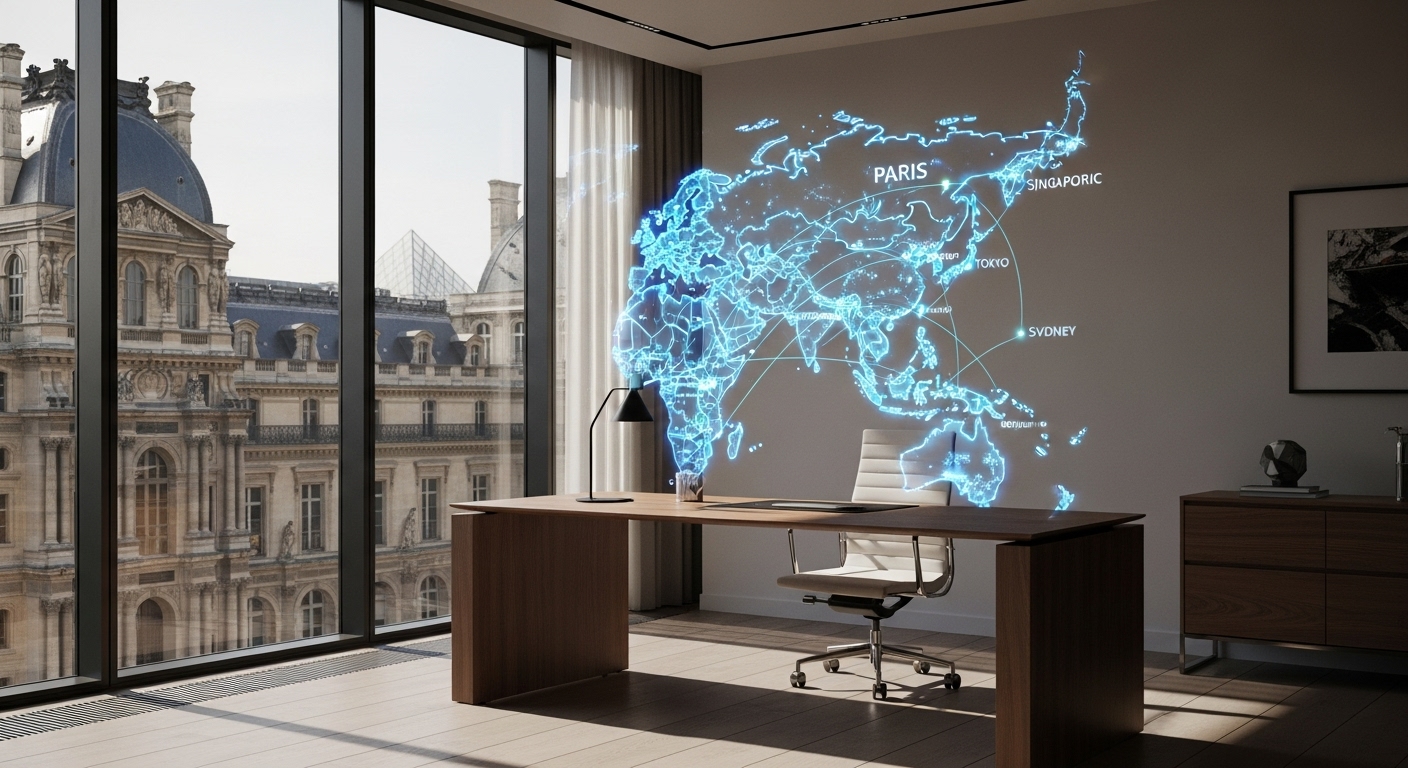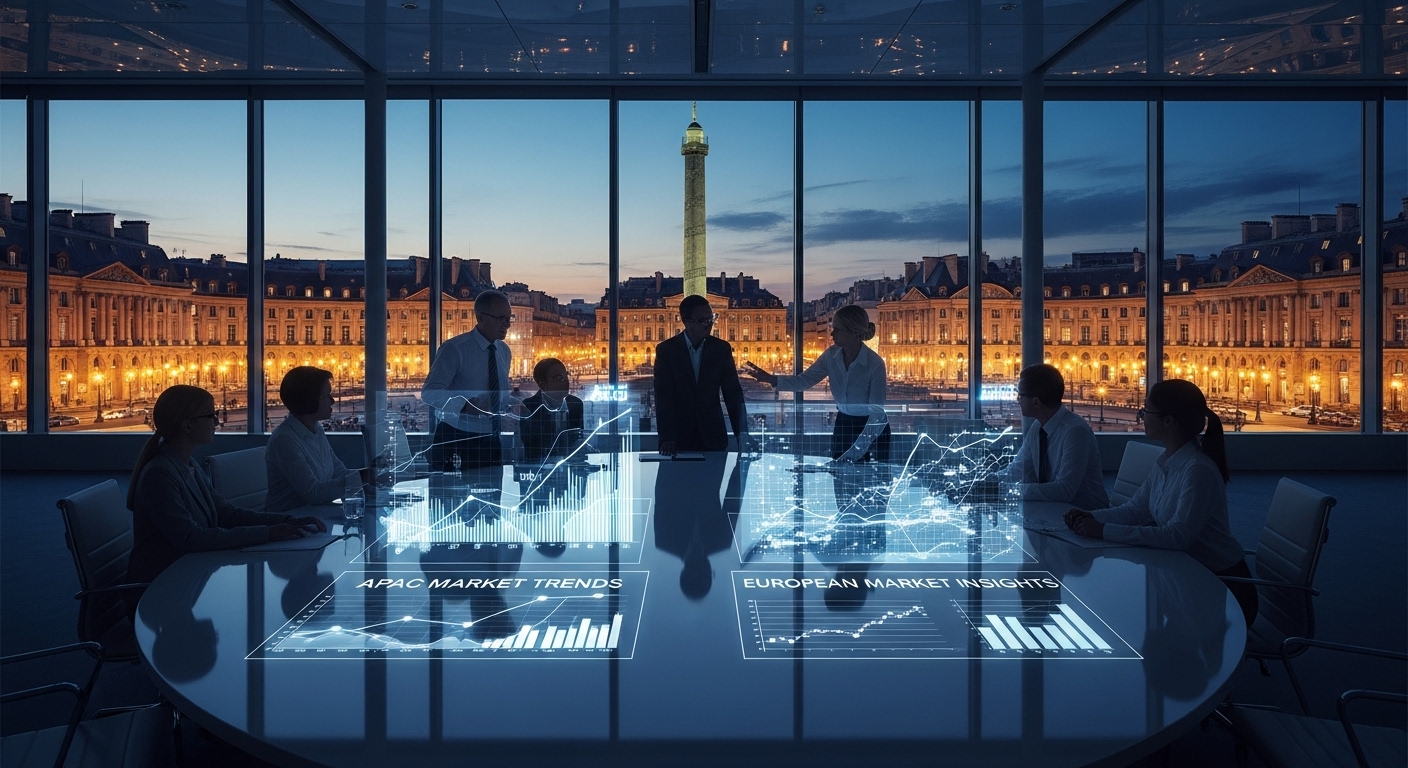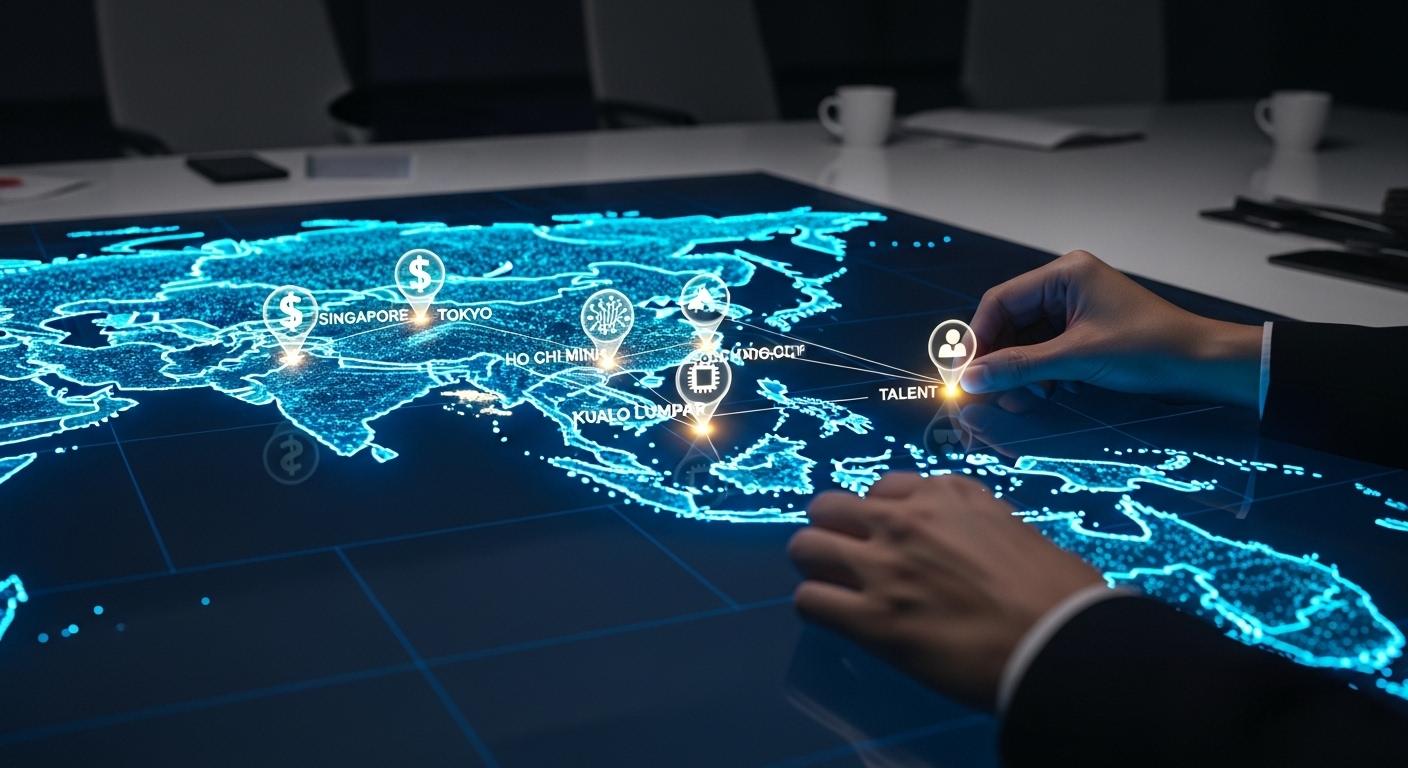The Asia-Pacific (APAC) region is no longer a monolith to be conquered from a single beachhead. It’s a dynamic, polycentric network of specialized hubs, each with its own economic engine, cultural nuances, and regulatory landscape. Navigating this complexity requires a sophisticated, multi-hub strategy—a decentralized footprint that leverages Singapore’s financial prowess, Vietnam’s manufacturing might, and South Korea’s tech innovation. Yet, the most effective anchor for this sprawling eastern network might just lie in the heart of the West. This post explores the counterintuitive but powerful strategy of coordinating your APAC expansion from a European command center, revealing why a strategic base in one of the world’s most prestigious districts offers unparalleled advantages for global growth. We will deconstruct the necessity of a multi-hub approach, analyze the unique benefits of a Parisian anchor, and provide a blueprint for establishing a launchpad that projects stability and ambition across continents.
Deconstructing the APAC Monolith: The Rise of the Polycentric Strategy
For decades, multinational corporations approached Asia with a singular focus, often establishing one regional headquarters in Hong Kong or Singapore to oversee all operations. This monolithic approach is now dangerously outdated. The APAC region has evolved into a ‘constellation’ of powerful, specialized economies. Attempting to manage a deep tech venture in Seoul and a supply chain in Jakarta with the same playbook from a single location is a recipe for failure. The modern approach is polycentric, acknowledging that true market penetration requires localized expertise and presence. This means recognizing Tokyo as a hub for deep R&D and robotics, Shenzhen as the undisputed king of hardware development, Bangalore as the core of IT and software services, and Sydney as a stable gateway to Oceanic markets. Each hub operates on a different rhythm, driven by distinct talent pools, investment flows, and consumer behaviors. A successful APAC strategy, therefore, isn’t about planting one flag; it’s about building a strategic network of outposts, each deeply integrated into its local ecosystem. This distributed model allows for greater resilience, faster adaptation to local market shifts, and a more authentic connection with diverse customer bases. The challenge, however, shifts from market entry to network coordination: how do you harmonize these disparate operations without stifling their local agility?
The European Anchor: Why a Western Hub Amplifies Eastern Success
The solution to coordinating a complex APAC network often lies outside the region itself. Establishing a strategic anchor in a major European city provides a critical layer of oversight and stability that can be difficult to achieve from within APAC’s fast-paced, competitive landscape. One primary advantage is time zone arbitrage. A European base can effectively bridge the operational gap between North American and Asian business hours, creating a truly 24-hour global workflow. This is invaluable for functions like global finance, software development handoffs, and executive decision-making. Furthermore, a European headquarters provides access to a different, often more stable, pool of capital and a distinct regulatory environment that can be leveraged for global financing and corporate structuring. It also serves as a ‘neutral ground’ for leadership. Bringing together division heads from Japan, Australia, and India in a central European location can foster a more cohesive global culture, sidestepping the internal rivalries or perceived dominance of any single APAC office. This centralized command center isn’t about micromanagement; it’s about providing the high-level strategic glue—managing brand consistency, allocating capital intelligently, and ensuring the entire multi-hub network is aligned with a singular global vision. It transforms a collection of regional offices into a seamlessly integrated global enterprise.
Why Paris? The Intersection of Luxury, Finance, and Geopolitical Stability
While several European cities could serve as a potential anchor, Paris offers a unique and compelling blend of attributes perfectly suited for managing a global brand with a significant APAC focus. Post-Brexit, Paris has solidified its position as a top-tier European financial center, attracting talent and capital from around the globe. Its position as the world’s undisputed capital of luxury goods and high fashion creates powerful synergies for any brand focused on premium markets—a significant segment in many thriving APAC economies. A Parisian address carries an immediate, universally understood message of quality, heritage, and prestige. This brand alignment is a powerful asset when building relationships and establishing credibility in Asian markets. Beyond commerce, France’s geopolitical stability and its central role within the European Union provide a secure and predictable foundation for long-term strategic planning. The city’s world-class infrastructure, from its international airports to its high-speed rail network, ensures seamless connectivity. For companies coordinating complex operations across the vast APAC region, the benefits of being headquartered in Paris 1st extend far beyond a prestigious postcode; it is about embedding the business within an ecosystem of global influence, financial power, and cultural significance.
The ‘Paris 1st’ Advantage: More Than Just a Prestigious Address
Drilling down further, the choice of the 1st arrondissement as a corporate anchor is a strategic masterstroke. This historic district is not merely a symbol of Parisian elegance; it is the functional heart of French and international business. Being located here places a company within walking distance of the Banque de France, major corporate legal firms, the Louvre, and the high-end retail of Place Vendôme. This proximity is not for vanity; it’s for operational efficiency and strategic positioning. It facilitates high-stakes meetings with financial partners, legal counsel, and key clients in an environment that exudes confidence and success. For a company managing an extensive APAC network, projecting this image of stability and permanence is crucial for building trust with partners and attracting top-tier talent both locally and internationally. An office in this district serves as a powerful tool for talent acquisition, attracting senior executives who value the cultural richness and connectivity the location provides. The message it sends across the network—to teams in Singapore, Seoul, or Sydney—is one of unwavering commitment to quality and a clear, ambitious global vision. It is the physical embodiment of the brand’s premier status, a constant reminder of the company’s position at the apex of global commerce.
Case Study in Coordination: Managing APAC from the Heart of Paris
Imagine a global technology firm specializing in high-end consumer electronics. Their APAC operations are spread across a design hub in Tokyo, a software lab in Bangalore, and a regional sales headquarters in Singapore. The challenge is to coordinate a major product launch simultaneously across these diverse markets. This is where a central command center becomes indispensable. From its headquarters, the executive team can orchestrate the global strategy. The day begins by reviewing end-of-day reports from the North American market, followed by a morning video conference with the Singapore sales team as their day begins, aligning on marketing messages and sales targets. Mid-day is reserved for strategic work and meetings with European financial partners to secure marketing budgets. In the afternoon, the Paris-based team connects with the Tokyo design hub as they come online, reviewing final prototypes and ensuring production timelines are met. This ‘follow-the-sun’ model, managed from a central point, ensures constant communication and rapid decision-making. Locating this command center in Paris 1st adds another layer of advantage. The CEO can host a critical pre-launch dinner with key investors at a Michelin-starred restaurant just steps from the office, reinforcing confidence in the company’s vision and execution, all while seamlessly managing a complex, multi-continental operation.
Building Your Launchpad: Practical Steps for a Parisian Anchor
Establishing a Parisian anchor for your APAC operations requires careful planning. The first step is navigating the legal framework for setting up a corporate entity in France, which has become increasingly streamlined for foreign investors. Engaging a local law firm with international expertise is paramount. The next critical phase is talent acquisition. Paris boasts a deep pool of highly educated, multilingual professionals skilled in international finance, marketing, and logistics. Leveraging executive search firms that specialize in placing talent with global firms can accelerate this process. When it comes to real estate, securing a presence is a key strategic decision. An office here is more than just workspace; it’s a strategic asset. The design and technology within the office must support the global coordination role, incorporating state-of-the-art telepresence systems and collaborative platforms to bridge the distance with APAC teams. Finally, cultural integration is key. The Paris office should not be an isolated ivory tower. It’s crucial to foster a culture of communication and partnership, with regular travel for key executives between Paris and the APAC hubs. By embedding the right legal, talent, and operational structures, your base in Paris 1st becomes less of a headquarters and more of a strategic hub—a central node that empowers and amplifies the efforts of your entire Asia-Pacific network.
Conclusion
The Asia-Pacific region’s complexity is its greatest strength, offering a mosaic of opportunities for businesses agile enough to adopt a polycentric strategy. However, managing this distributed network requires a stable, strategic, and well-positioned anchor. The idea of placing this anchor in Paris may seem unconventional, but it is rooted in sound strategic logic. Paris provides a unique convergence of financial muscle, geopolitical stability, unparalleled brand prestige, and logistical connectivity. It serves as the perfect fulcrum to balance the operational demands of a truly global enterprise, bridging the commercial worlds of the East and West. By establishing a launchpad in the city’s esteemed 1st arrondissement, a company does more than acquire an office; it acquires a powerful symbol of its global ambition and a strategic command center from which to orchestrate its success across the dynamic hubs of Asia-Pacific. In the intricate dance of global expansion, this Parisian pivot may be the most decisive step towards achieving a harmonious and profitable international presence, proving that sometimes the best way to conquer the East is to anchor in the West.





